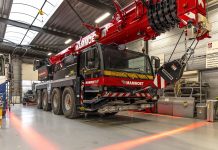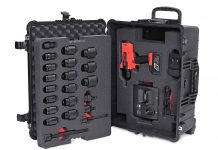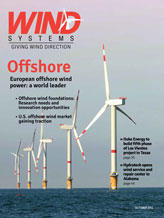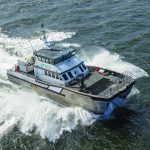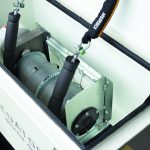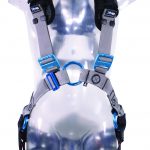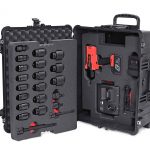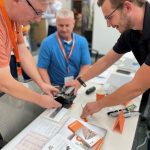Major component repair costs are a real issue for wind farms over five years old. Taking as an example data set of six wind farms that Romax monitors, in the last 12 months there have been detections of nine failing planet bearings and 14 failing main bearings. In each case, the damage has been confirmed by inspection and repairs scheduled. These repairs are expensive and significant cost reduction can be achieved by optimizing the scheduling of repairs. Romax customers are using InSight Fleet Monitor to realize these cost reductions.
Wind Turbine Condition Monitoring
Effective signal processing techniques for condition monitoring of rotating machinery have existed for decades, but applying these techniques to the wind industry presents many challenges. A large fossil fired power station may have only four large machines that need to be monitored; these machines operate in a very predictable manner, in a carefully controlled environment, perhaps with the service engineer located just a walk away. A wind farm, by contrast, comprises many turbines, with highly variable operation, located at the top of tower, often in remote locations and often with extreme ambient conditions.
Many independent studies have shown that predictive condition-based maintenance can significantly reduce the cost of energy from wind but, in spite of the relative maturity of condition monitoring techniques, this value is often not realized. Most owners/operators face the challenge that they have a range of different condition monitoring systems (CMS) installed, with a variety of interfaces and software tools. This makes it difficult to monitor efficiently and to a consistently high quality. Moreover, there is a shortage of the valuable expertise required to interpret the data. Software tools designed with efficient workflow in mind are essential so that wind farm owners/operators can get the most value from scarce expertise; nobody wants their valuable experts to waste time waiting while switching between turbines, or different software systems.
Fleet Monitor is Romax’s web-based, hardware-independent, software for wind turbine health monitoring. The software enables condition monitoring engineers to monitor an entire global fleet of turbines, whatever turbine type or CMS type, with one platform. This means that consistent alarm strategies can be applied so that lessons learned on one farm can be quickly and efficiently implemented to improve the quality of monitoring on another, without the difficulties created by moving between disparate systems.
Using data from existing CMS and SCADA systems, along with lubrication and operations and maintenance data, the software is able to provide a complete picture of turbine health. Often, faults can be detected as much as 12 months in before failure. Once an incipient fault has been detected, various measures, such as main bearing life extension or turbine de-rating, may be taken to increase the component life. Multiple main bearing, or gearbox, change-outs may be scheduled together so that the crane cost is spread and the overall OPEX significantly reduced.
Designed with global access and collaboration in mind, Fleet Monitor enables site managers, asset management teams, and condition monitoring centers to communicate and collaborate more effectively.
Fleet Monitor Features
• Hardware and software independent so that all turbines can be monitored efficiently and effectively through one platform.
• Proven analysis techniques including time domain trending, FFT, envelope, Cepstrum and time synchronous averaging enable faults to be detected early so that repair costs can be kept to a minimum.
• All data stored and backed up. Many CMS automatically decimate historical data, but with Fleet Monitor no historical data is discarded.
• Libraries of tried and tested alarm rules based on Romax’s experience of monitoring over 3 GW of wind turbines mean more advanced warning and fewer false alarms.
• Remaining useful life models: these innovative prognostic techniques enable forecasts up to three years ahead, so that operations and maintenance budgets can be based on real data rather than guesswork.
• Automated alarm thresholding, which embeds best practice.
• Powerful alarm configuration enables alarms to be set against vibration, SCADA and lubrication data, resulting in confident diagnoses of the turbine condition.
• Automated reporting so that condition monitoring engineers can focus on what really matters rather than copying and pasting figures and formatting documents.
Networking
To use Fleet Monitor, no hardware or software installation is required because Fleet Monitor is web-based Software as a Service (SaaS). All that is required is VPN access to the site server(s). This allows Romax to fetch the data and insert it into the InSight Health Management platform automatically, see Figure 1. Open an internet browser on any device, then go to the Fleet Monitor website and you’ll be able to log-in and check the condition of your wind turbines, make rapid diagnoses and schedule inspections.
Case Study 1: Planet Bearing Failure Detection
In this example the vibration health index started trending in September 2013, see Figure 2. The analyst using Fleet Monitor recommended inspection. The first inspection (November) showed significant surface distress on the planet gear teeth. The turbine could continue to operate and the trend was carefully monitored. A second borescope inspection was scheduled in December and severe damage confirmed on a planet bearing. The gearbox was replaced in January 2014. The site had four months warning to arrange the most cost effective repair and avoided a catastrophic failure and downtime (temperature trend or other turbine fault provided no indication). This is typical of Romax monitoring of planet bearing failures: 3-6 months warning as the wear out from bearing spalling is slow. Aging gearboxes that have survived infant mortality issues (e.g. from poor design, poor steel or heat treatment, grind temper and so on) are commonly failing in this mode. Figure 3
Case Study 2: Main Bearing Failure Detection
Main bearings failures (initiated from micropitting then progressing to surface initiated macro-pitting) also progress slowly. Figure 4 provides a typical example where the trend ran for 12 months. This is typical; Romax has not seen a case of less than three months warning and has monitored failing main bearings for 18 months before a repair was made. At the end of useful life the condition shown in Figure 5 is typical. Romax’s main bearing life extension technology can be applied to suspend or severely slow the failure, which offers a useful O&M strategy for sites with failing main bearings: Monitor and catch early, extend bearing life, optimize repair schedules.
Damaged main bearings can also be detected using SCADA data, however not nearly as early as by vibration monitoring. For sites that have no CMS this is valuable and Fleet Monitor provides flexibility to include vibration and/or SCADA monitoring. Figure 6 provides an example in which a damaged main bearing is the outliers in SCADA temperature data.
Conclusion
Crane hire accounts for a large proportion of cost for a main bearing or planet stage repair; the benefits of carrying out multiple repairs with one crane mobilization are clear. Monitoring and scheduling all major component replacements in the low season reduces costs dramatically. Romax’s proven monitoring technology is available to enable predictive maintenance with carefully optimized scheduling, worldwide, using a range of CMS hardware that is installed on the original equipment and incorporating SCADA and lubrication data.
















